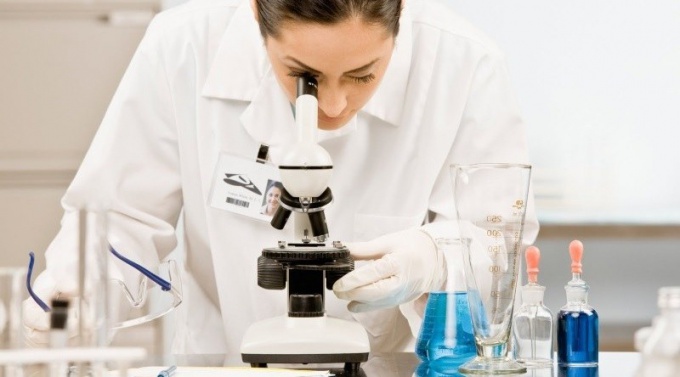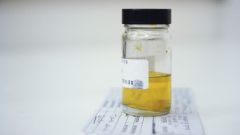Bacterial stool test: concept, indications for
Bacterial feces analysis aimed to determine the intestinal microflora and detection of pathogenic bacteria, viruses.
Intestinal microflora rich in various microorganisms. They are divided into obligate group of bacteria (lactic acid bacteria and bifidobacteria, E. coli, etc.), plus (staphylococci, fungi) and transient (opportunistic pathogens). Obligate the group is 95% - 98% of the total microflora. Its functions include synthesis of b vitamins and vitamin K, fat metabolism, water-salt metabolism, thermal exchange, elimination of toxins, the formation of immunity, etc. At infringement of balance of microflora manifests itself dizbakterioz. When injected into the intestine of pathogenic microorganisms (e.g. Salmonella) will develop an infectious disease. In order to determine the nature of dizbakterioz or a disease, is assigned a bacterial stool cultures (bacanales).
Indications for bacterial analysis:
- babies of mothers who suffer from bacterial vaginitis and who are in the nursing home;
- children who have prolonged indigestion, frequent colds;
- long-term antibiotic therapy, hormonal therapy, long-term treatment with NSAIDs;
after infectious diseases of the gastrointestinal tract, or parasitic infestations;
- during chemotherapy and radiotherapy in cancer patients;
- with immunodeficiency.
Decoding results bachanalia
Standards of cultures differ in younger children, and older adults. One Bactriana cell CFU (colonialera unit), these units is measured by concentration or number of microorganisms in the investigated environment. Consider SOME different ways: counting under a microscope in a certain amount of sample, separation of the solid environment on the sector and counting the number of microbes in one sector, etc. are Recorded in degrees (10*10, 10*8, etc.), referred to as CFU/ml CFU/square centimeter, etc.
Bifidobacteria represent 95% of gut bacteria, take part in sinetta b vitamins, shaping the immune system. The reason for the decline in their number could be improper diet and drug therapy, intestinal infections and chronic diseases gastrointestinal tract, fermentopathy, and immune diseases, changes in climatic zones and stress.
The vitals:
- children under one year: 10*10-10*11
- older children: 10*9-10*10
- adults: 10*8-10*10
Lactobacilli constitute 4%-6%, maintain the PH in the intestine, substances produced by them, are involved in the destruction of pathogenic bacteria, lactase. The reason for the decline in their number could be incorrect nutrition,drug therapy, intestinal infections, chronic diseases of the gastrointestinal tract, stress.
The vitals:
- children under one year: 10*6-10*7
- older children: 10*7-10*8
- adults: 10*6-10*8
The Escherichia are involved in the formation of vitamins, shaping the immune processing of sugars. They appear in the body from birth and stay there throughout a person's life. The reason for the decline in their number could be improper nutrition, antibiotic therapy, intestinal infection and helminthiasis.
- children under one year: 10*6-10*7
- older children: 10*7-10*8
- adults: 10*6-10*8
Bacteroides help to process fats. Not are sown in babies, only children from 8-9 months. Antibiotic therapy and intestinal infections can lead to a decrease in their number in the intestine.
- children under one year: 10*7-10*8
- older children: 10*7-10*8
- adults: 10*7-10*8
Propionobacteria are involved in the processing of carbohydrates and dairy proteins, as well as help to control the normal PH in the intestine. Getting into other organs and cause inflammation.
- children under one year: 10*3-10*5
- older children: 10*5-10*6
- adults: 10*5-10*6
Enterococci are involved in the processing of carbohydrates, production of vitamins, the formation of local immunity in the gut). In excess quantities cause a number of diseases. The reasons for the increase in their number could be low immunity, food Allergy, antibiotic therapy, poor diet, reduced the number of Escherichia, helminthiasis.
- children under one year: 10*5-10*7
- older children: 10*5-10*8
- adults: 10*5-10*8
Saprophytic staphylococci are non-pathogenic (hegemonically and epidermal) and pathogenic (plasmahouse, hemolytic and Staphylococcus). Golden causes a toxic infection. Pathogenic stafilokokkove in cultures in norm should not be. They get into the system from the environment at the "help" dirty hands, poor quality food, healthcare-associated infections.
- children up to years: ≤104
- older children: ≤104
- adults: ≤104
Clostridia are involved in the processing of proteins, the result is produced skatole and indole. In small quantities these compounds stimulate peristalsis in the large can cause putrefactive dyspepsia. Large amounts of protein foods may lead to pathological growth of clostridia.
- children up to years: ≤103
- older children: ≤105
- adults: ≤105
Fungi of the genus candida (Candida). If you increase them in the gut appears fermentative dyspepsia, with the increase in their number in other organs develop various candidiasis. The overgrowth of Candida can cause large amounts of carbohydrates in the diet, antibiotic therapy, diabetes, pregnancy, stress.
- Children under one year ≤103
The older children ≤104
Adults ≤104
Pathogenic enterobacteria (Salmonella, Shigella) bacterial culture test detected normal.
Rules for collecting stool for bacterial analysis
A few days before collection to cancel the antibiotics (not to start antibiotics before it is put bacanales), NSAIDs, laxatives, antidiarrheal and anthelmintic drugs. Not to put before the enema. To warn the doctor about the medicines you are taking, visited shortly before the date of analysis countries (Kale can be specific fungi or parasites).
To collect the feces you need into a sterile container. He is going to a special spatula from the three different locations of one portion of feces, approximately a third of a standard container (2 teaspoons). Cal should not be in contact with urine, water and cleaning products or detergents.
Ideally, feces should be delivered to the laboratory warm ( no more than 40 minutes after defecation), but acceptable delivery time up to 3 hours. In emergency cases you can store the container with feces in the refrigerator for up to 8 hours but it is worth remembering that for long periods of time can affect the result.




